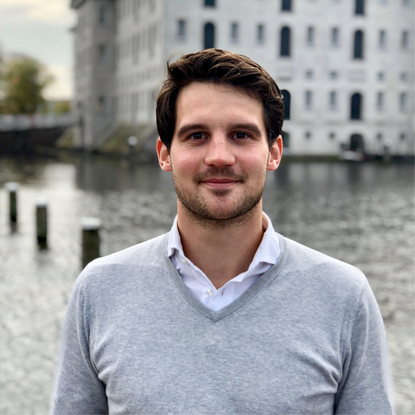The energy transition in cities is far from a simple equation of installing more solar panels and switching to electric heating. While solar energy installations continue to follow subsidy schemes, market values and evolving regulations, cities face a more complex challenge: ensuring that sustainable energy systems work spatially within urban constraints and deliver an inclusive transition for all residents.
This complexity is where the concept of Positive Energy Districts (PEDs) emerges, not just as another sustainability buzzword, but as a comprehensive framework that addresses the multifaceted nature of urban energy transformation. The Simply Positive project, which concluded in a released report in May 2025 (now available on openresearch.amsterdam) offers critical learnings into how cities can navigate these challenges.
“We need to invest unequally to create equal opportunities.”
Doede Bardok, Program Manager Solar Energy at the City of Amsterdam
The Urban Energy Paradox
Cities struggle inherently with adopting sustainable electric heating systems, meeting the spatial requirements for new energy infrastructures, and creating equitable access to clean energy benefits. This challenge is particularly evident in Amsterdam, where a closer look reveals significant disparities in solar adoption across neighborhoods.
"In Amsterdam, we invest unequally to create equal opportunities," explains Doede Bardok, Program Manager Solar Energy at the City of Amsterdam. "We see that investing in solar panels can help lower energy bills in many places. For Amsterdam, it's crucial to understand why solar panels are heavily installed in some areas and barely present in others. With these insights, we can adjust our approach where needed."
The PED Framework
Positive Energy Districts offer a lens through which cities can address these complexities systematically. Considering the current, dense, often historic, built environment in cities, it seems rather erratic to expect these energy sinks to be considered to be energy positive. But it is only when fully assessing the entire energy needs on a district level, until one starts to uncover various critical elements of the energy transition:
Spatial Integration: How do new energy systems fit within existing urban fabric? The spatial requirements for sustainable heating systems, battery storage, and grid infrastructure must be carefully planned to avoid conflicts with each other and other urban functions.
Social Equity: Who benefits from the energy transition and who bears the costs? PEDs emphasize the importance of inclusive participation in planning processes and equitable distribution of benefits.
System Integration: How can new energy technologies have a multi-purpose benefit? This is illustrated by the integration of photovoltaic-thermal (PVT) systems, which can provide both electricity and heat—a particularly valuable technology for space-constrained urban environments.
Economic Viability: How can such technologies become accessible to end-user collectives, as regulations, subsidies and ownership rights are often determined per energy carrier rather than integrally?
However, technology alone cannot solve the challenge of equitable energy access. The project's findings underscore the importance of understanding local contexts, engaging communities in planning processes, and developing policies that actively address barriers to participation.
Lessons for Urban Energy Policy
The Amsterdam case study reveals several critical insights for cities pursuing energy transitions:
Data-Driven Understanding: Cities must invest in understanding the spatial and social patterns of energy adoption. Why do some neighborhoods have high solar uptake while others lag behind? These patterns often reflect underlying inequities that require targeted interventions.
Adaptive Governance: Energy policies must be designed with flexibility to adjust approaches based on local conditions and emerging evidence. What works in one neighborhood may not work in another.
Participatory Planning: Inclusive energy planning requires genuine community engagement, particularly in neighborhoods that have historically been underserved by infrastructure investments.
Integrated Solutions: Successful PEDs require coordination across multiple urban systems—energy, mobility, housing, and social services—rather than siloed approaches.
Ensuring the Benefits of the Energy Transition Reach Everyone
As cities worldwide grapple with climate targets and social equity goals, the lessons from projects like Simply Positive become more valuable. The transition to positive energy districts isn't just a technical challenge; it's fundamentally about reimagining how cities can serve all residents equitably and justly while meeting ambitious sustainability goals.
The path forward requires continued innovation in both technology and governance, supported by robust research that bridges technical solutions with social realities. For Amsterdam and cities worldwide, the goal isn't just to generate clean energy, but to ensure that the benefits of the energy transition reach everyone.
This article draws on insights from the Simply Positive project, an international research collaboration involving AMS Institute, TU Delft, PV Works, and Wageningen University and Research. AMS Institute has drafted its project learnings and made it available through the Open Research Amsterdam (ORA) platform.
